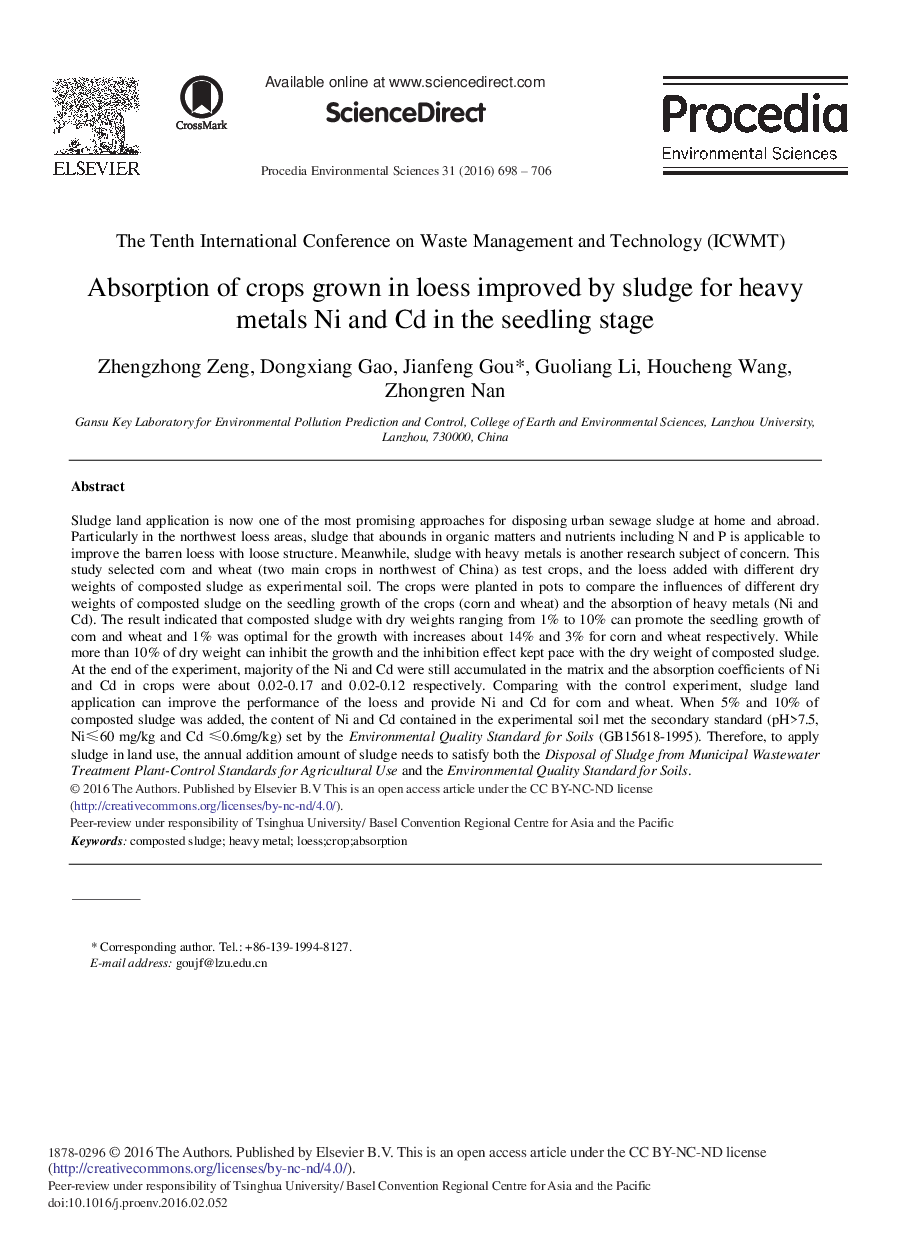| کد مقاله | کد نشریه | سال انتشار | مقاله انگلیسی | نسخه تمام متن |
|---|---|---|---|---|
| 4401604 | 1618613 | 2016 | 9 صفحه PDF | دانلود رایگان |
Sludge land application is now one of the most promising approaches for disposing urban sewage sludge at home and abroad Particularly in the northwest loess areas, sludge that abounds in organic matters and nutrients including N and P is applicable to improve the barren loess with loose structure Meanwhile, sludge with heavy metals is another research subject of concern. This study selected corn and wheat (two main crops in northwest of China) as test crops, and the loess added with different dry weights of composted sludge as experimental soil. The crops were planted in pots to compare the influences of different dry weights of composted sludge on the seedling growth of the crops (corn and wheat) and the absorption of heavy metals (Ni and Cd). The result indicated that composted sludge with dry weights ranging from 1% to 10% can promote the seedling growth of corn and wheat and 1% was optimal for the growth with increases about 14% and 3% for corn and wheat respectively. While more than 10% of dry weight can inhibit the growth and the inhibition effect kept pace with the dry weight of composted sludge At the end of the experiment, majority of the Ni and Cd were still accumulated in the matrix and the absorption coefficients of Ni and Cd in crops were about 0.02-0.17 and 0.02-0.12 respectively. Comparing with the control experiment, sludge land application can improve the performance of the loess and provide Ni and Cd for corn and wheat When 5% and 10% of composted sludge was added, the content of Ni and Cd contained in the experimental soil met the secondary standard (pH>7.5, Ni≤60 mg/kg and Cd ≤0.6 mg/kg) set by the Environmental Quality Standard for Soils (GB15618-1995). Therefore, to apply sludge in land use, the annual addition amount of sludge needs to satisfy both the Disposal of Sludge from Municipal Wastewater Treatment Plant-Control Standards for Agricultural Use and the Environmental Quality Standard for Soils.
Journal: Procedia Environmental Sciences - Volume 31, 2016, Pages 698–706
